Whats So Special About The Sci-Fi Special Edition?
None
Jordan Farley looks back over the choppy history of science fiction and fantasy’s best, worst and most baffling extended cuts
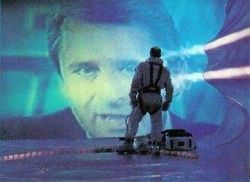
Leonardo da Vinci once said: “Art is never finished, only abandoned,” a painfully true statement for everyone from a renaissance artist to a humble hack on a deadline.
This was paraphrased in recent years by George Lucas, who said: “Films are never finished, only abandoned.” The difference between Lucas and da Vinci (among many) is that da Vinci didn’t have a damn near unlimited revenue stream and a lifetime to go back and “finish” his art. Lucas did, but he’s only one example of the many film makers to return to former glories for “special editions”, “director’s cuts” or “extended editions”; whether it be to rectify something compromised for commercial/studio-imposed reasons, to achieve an effect that wasn’t technologically possible in the past, to alter an aspect the film-maker is no longer happy with (or never was), or simply to cash-in on an anniversary re-release.
Movie and TV makers, it seems, can’t resist the urge to tinker with their work, and there’s no indication the trend is slowing down. The advent of DVD ushered in a gamut of “special editions” – most adding nothing more than a couple extra minutes that would have been better left in the Deleted Scenes section – all to make a release more desirable. Our list ignores these, so shouldn’t be considered a “complete” list in any way, and instead focuses on 27 of the most significant “special editions” of the past 30-odd years, from the essential to the appalling, the must-watch to the must-obliterate. It’s going to be special.
.
George Lucas
The Films: Star Wars Episodes I-VI
Years: 1977-2011
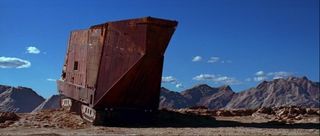
What makes them special? Think of special editions in science fiction and one name springs to mind first – George Lucas. The most significant of his childhood-castrating Special Edition Star Wars re-releases (and the only ones to bear that specific name) were the 1997 Special Editions, released in cinemas and on VHS with digitally-remastered sound, dozens of new digital effects shots (most notably a CGI Jabba The Hut, a new dance number from the Max Rebo Band in Jabba’s palace and, sigh, Greedo shooting first), and newly filmed sequences (such as a glimpse at the Wampa creature that captures Luke at the beginning of Empire ). Lucas changed things again for the 2004 DVD release (biggest differences – Ian McDiarmid replacing chimp lady in Empire , Hayden Christensen’s punchable mug appearing as a force spirit in place of Sebastian Shaw and a goofy “Noooooo!” as Luke falls down Cloud City). Lucas wasn’t finished fiddling with Star Wars , however, tinkering yet again for the 2011 Blu-ray release (more goofy “Nooo”s, this time from Vader, and a CGI Yoda in The Phantom Menace ).
Lucas, however, has been tinkering with the films since the very beginning – the consequence of having a bad experience making the biggest movie on the planet. In 1977, for example, he created a version with a mono soundmix for cinemas unable to support Dolby Stereo. This version also contained a couple of audio alterations, such as changing the line “Blast it, Biggs, where are you?” to “Blast it Wedge, where are you?” In 1980 Star Wars was re-released in cinemas with the addition of a pre-crawl title sequence reading “ Episode IV: A New Hope ”, while in the same year the 70mm version of Episode V contained a number of differences to the more widely seen 30mm version, including additional optical wipes and a missing radar dish from Cloud City.
Sign up to the SFX Newsletter
Get sneak previews, exclusive competitions and details of special events each month!
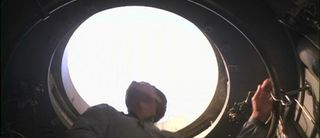
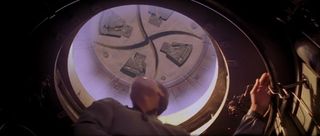
This handy infographic contains a comprehensive breakdown of all the various Star Wars releases over the years. What’s clear is that it’s unlikely Lucas will ever be happy with the original trilogy. A combination of near-unlimited revenue (fuelled by an extended universe) and almost unlimited freedom to make these changes means he has developed a poisonous reputation among fans for bludgeoning their cherished childhood memories. This isn’t helped by the fact Lucasfilm refuse to release cleaned-up versions of the original films – citing cost as the reason. The prequels aren’t immune to the special edition treatment either. The first Phantom Menace DVD release, for example, contained an extended pod race sequence; however, the changes to both Attack Of The Clones and Revenge Of The Sith were minimal – perhaps because the amount of control Lucas had became greater and greater with each film. Love ’em or hate ’em Star Wars epitomises the Special Edition release cycle, and while more often than not they’re a means to make the innumerable re-releases another essential purchase for hardcore fans, some of the changes are for the better. No one is going to complain about a good surround sound mix for example, or the breathtaking vistas added to Bespin, so that Cloud City doesn’t look so studio bound.
The Film: THX 1138
Year: 2004
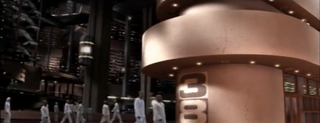
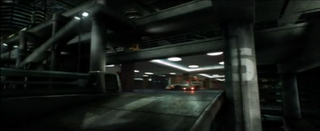
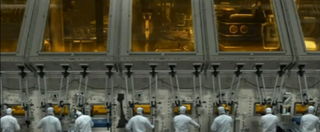
What makes it special? Having caught the special edition bug so early on in his career, the most surprising thing about the THX 1138 Director’s Cut is how long it took to get made. THX was Lucas’ feature length directorial debut – a dystopian drama where the human population are controlled by emotion-suppressing drugs and faceless android enforcers. The most noticeable changes to the 2004 special edition are CG extensions to the environment, a computer generated sequence with THX working on a robot, colour corrections, cleaned up holograms, additions to the number of people in crowd scenes, CGI elements in the final car chase sequence and the appearance of new creatures in the tunnels including mutant scorpions and monkeys. There are also less noticeable changes to the order of shots in certain sequences (such as an early scene where LUH and THX are “watching” each other on monitors).
For the most part the changes are for the better, creating a greater sense of scale in the world, while cleaning up some of the more dated effects work. However several of the new CG elements are jarring additions – most notably the mutant monkeys – immediately pulling you out of the experience. It’s not perfect, but it’s our preferred version.
.
.
Ridley Scott
The Film: Blade Runner
Years: 1991 and 2007
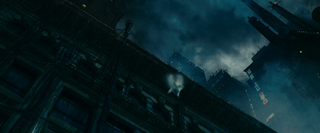
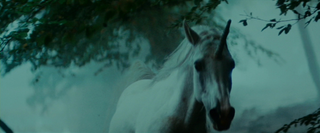
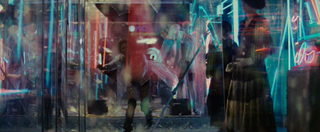
What makes it special? The history of Ridley Scott’s troubled Blade Runner is knottier than a pair of headphones cables after five minutes in the average pocket, so to prevent breaking brains we’re going to focus on the two most notable re-releases – the 1991 “Director’s Cut” and 2007’s “Final Cut”.
The Scott-approved Director’s Cut was released in 1991 as a direct response to the success of the Workprint’s unauthorised exhibition in certain theatres (the workprint was a fable version shown to preview audience before the original release). The most significant changes include the removal of Deckard’s droll voiceover, re-insertion of Deckard’s unicorn dream sequence (which adds a huge amount of depth to a previously hidden subtext) and removal of the ludicrous studio-enforced happy ending. It’s a massively superior and meaningful version of the film, drastically altering the tone and narrative with what amounts to mere minutes of additional/altered screen time.
The Director’s Cut, however, wasn’t created by Scott, but film preservationist Michael Arick, with notes from Scott. The only cut Scott has ever had complete artistic control over was the 2007 “Final Cut”, released both theatrically and on DVD/Blu-ray in 2007. From a digital pupil that reacts to the flames erupting over LA to hockey-masked geisha dancers, the changes are mainly used to correct errors, mistakes and shortcomings that have existed for years, such as putting the face of actress Joanna Cassidy over the head of stunt double Lee Pulford during Zhora’s death sequence – clearly a man in drag previously. Perhaps the most sympathetic change, though, is the dark, moody skyline added to the moment when the dove flies out of the hands of the dead Roy Batty – it fits so perfectly with the dour mood of the scene, rather than the previous “factory at dawn” look.
There are more changes than you’d think, but unless you’re the type who prefers Deckard’s voiceover (weirdo) the Final Cut is the only version to consider. It’s also worth pointing out that the Workprint is available as part of the five-disc 2007 Ultimate Edition DVD release for the curious, as it does feature several shots not present in any other versions.
The Film: Alien
The Year: 2003
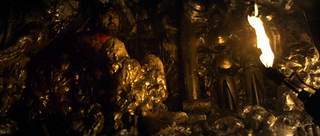
What makes it special? Nothing. The Alien director’s cut is among the worst example of the Special Edition. If it were up to us we’d submerge every copy in acid blood. Despite boasting the subtitle “The Director’s Cut” it was created purely to cash in on the 25th year anniversary – a marketing ploy to draw more people in for the limited theatrical re-release. Heck, even Scott admitted as much on the commentary for the Director’s Cut.
That said, there are a couple of memorable additions, such as a violent confrontation between Lambert and Ripley which proves girls don’t stick together aboard the Nostromo. The most drastic new addition is the cocoon sequence, where Ripley happens upon Dallas in the bowels of the Nostromo, looking a little worse for wear as he’s transformed into one of the eggs we see on the space jockey’s ship. It’s a neat cyclical reproductive cycle, but makes no sense in context of the rest of the series – namely Aliens where we see the Queen laying these eggs. Watch once to satisfy your curiosity, but then stick with the original version, both available in gorgeous HD on the Alien Legacy box set (you listening, Lucas?)
.
.
James Cameron
The Film: Aliens
Year: 1992
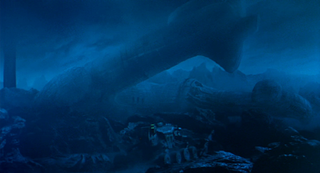
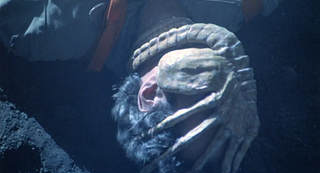
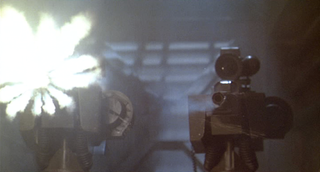
What makes it special?: The Aliens Special Edition splits fans right across the middle, like Bishop after a run-in with the Alien Queen. The 17-ish minutes of additional material we were first shown during its television premiere in 1989, with two further scenes incorporated into the 1992 laserdisc release. Unlike most special editions on this list, rather than mere visual effects tweaks Cameron adds in lengthy new scenes which, for the most part, create a genuinely experience.
Ripley discovering that her daughter died as an old woman is crucial to the themes of motherhood throughout the film; the sentry gun scenes add tension and a sense of hopelessness to the marines’ plight; and Hudson’s monologue during the Sulaco drop contains lines which might have become as iconic as “Game over man, game over,” had they been included originally, such as, “Me and my squad of ultimate bad-asses will protect you!” or, “We got nukes, we got knives, sharp sticks...”
However, the most significant new addition is a tension-killer and arguably ruins the first half of the film as we actually see the colonists on LV-426 and witness the Jordens as they happen across the Space Jockey’s ship from the first film. Skip this scene, however, and you’ve got the definitive version of Aliens . Curiously, the Special Edition was the only version available on VHS and DVD for years, at least until the DVD Quadrilogy.
The Film: The Abyss
Year: 1993
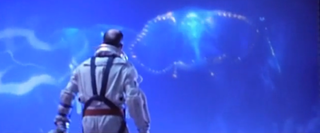
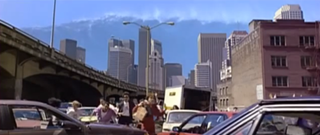
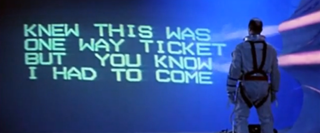
What makes it special? If there’s one thing we’ve learnt so far, it’s that when it comes to special editions you have to take the rough with the smooth. When it comes to The Abyss , however, there is no rough. It’s the Barry White of Special Editions. We’d even go as far as to say it’s the only version you should consider watching – even at a near three-hour runtime.
The most egregious omission from the original theatrical cut isn’t the climactic wave sequence, but the scene aboard the alien vessel, where the NTI’s communicate with Bud using television broadcasts. Cutting this scene meant the loss of an entire sub-plot and the clarity of the movie’s message – that humanity still has it within itself the ability not to destroy the planet.
The wave sequence is the most infamous omission though, cut by Cameron himself (not the studio) because of concerns over the film’s runtime and ILM’s ability to complete the sequence in time. It was first made available on laserdisc in 1993 after the success of Terminator 2: Judgment Day secured Cameron $500,000 to complete work on The Abyss , abandoned three years earlier, including recording new dialogue, cleaning up effects work with ILM’s new tools and inserting over a dozen new scenes. In all, the 2001 DVD release lists 29 changes in its swanky inlay. You don’t see enough nice inlays these days.
The Film: Terminator 2
Year: 1993 and 2001
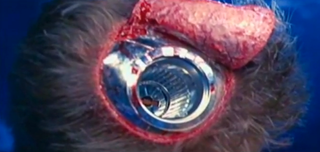
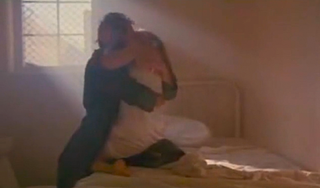
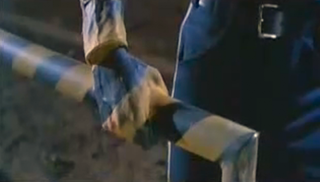
What makes it special? Several scenes were shot during the making of Terminator 2 which were cut from the final film, mainly for reasons of time and pacing, which makes the theatrical cut Cameron’s preferred Director’s cut. However, there are a number of interesting additions to the special edition which make it a must-watch for fans of T2 and our preferred version.
The biggest difference is a dream sequence featuring a cameo from Michael Biehn as Kyle Reese, who visits Sarah in the hospital. Cameron cut the scene to avoid confusion among those members of the audience who hadn’t seen the first film. Other additions include a scene where the T-1000 kills John Connor’s dog Max and a neat in-camera effects shot where Sarah removes the microchip from the T-800’s head. As she tries to destroy it, John stops her. His actions are critical – an important milestone on his road to becoming the leader of the human race. There’s also a goofy scene where the T-800 learns how to smile and a scene showing T-1000 malfunctioning after being frozen – a fatal flaw that gives away that he’s not functioning at 100% at a decisive moment.
A couple other scenes were included in an Extended Special Edition available as an Easter egg on certain DVD and Blu-ray releases including two more scenes where the T-1000 scans John’s room for more information, and an upbeat future coda with Sarah as an old woman. The only downside to the Special Edition is that it extends the run time to a slightly unwieldy two and a half hours – admittedly not a problem for most.
The Film: Avatar
Year: 2010
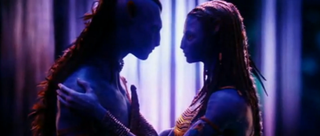
What makes it special? Unlike Cameron’s three other special editions, Avatar ’s doesn’t change anything as significant as narrative focus or the entire meaning of the film. Rather, the new additions offer additional insights into the world of Pandora and answer the question on everyone’s lips after the theatrical release – how do Na’vi have sex?
Two additions we’d argue should have been included in the theatrical cut are one where Jake and Dr Augustine, in their Avatars, visit the school where Grace once taught (and find a copy of The Lorax – thudding symbolism alert!) and a scene in which Jake gives Tsut’sey a warrior’s death after his fall from and is made leader of the Omaticaya. There’s also a visually arresting aerial hunt sequence, an explanation for the Hallelujah Mountains and, yes, hair sex. Not essential, but for a film celebrated for offering a window into a world, more is only a good thing.
The special edition was released theatrically worldwide in August 2010, a mere eight months after the original theatrical release and a couple of months before the Extended collector’s edition on DVD and Blu-ray. This included a new “Extended” cut which was basically the same as the Special Edition, but with an Earthbound opening on Earth that gave us a glimpse of future society. The extended cut runs at just over 15 minutes more than the theatrical, whereas the special edition is eight. Cameron is said to prefer the original zero-g spaceship opening but released the extended edition on DVD as a thank you to fans.
.
.
Steven Spielberg
The Film: Close Encounters Of The Third Kind
Years: 1980 and 1998
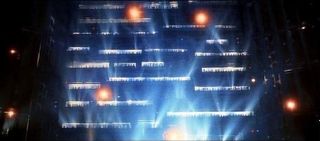
What makes it special? Steven Spielberg has famously shied away from recording audio commentary’s for any of his films, but he isn’t immune to tinkering with them after their initial release, such as with Close Encounters Of the Third Kind . Spielberg had final cut privilege on the theatrical release, so when he was forced to release the film six months before he felt it was ready in 1977, and after it proved to be a huge financial success, Columbia agreed to let him work on a special edition release. The one caveat was that he had to show the inside of the mothership, a marketing man’s dream but a colossal artistic error, and the main reason to avoid the special edition like the space flu.
Spielberg was given an astonishing $1.5million for what became seven minutes of additional footage, including several new scenes depicting Roy’s deteriorating mental condition and a dazzling sequence in which the giant SS Cotopaxi is discovered in the Gobi Desert. Unlike most, Close Encounters ’ special edition actually runs a few minutes shorter than the theatrical release owing to the omission of several scenes, including those of Roy at work.
Spielberg still wasn’t satisfied though, and in 1998 created another version of Close Encounters for the Collector’s Edition DVD release. The Collector’s Edition blends the best of the new scenes from the special edition with the theatrical cut, and wisely exorcises the mothership interior. All three versions were made available as part of the beautiful 30th anniversary edition, which also includes a handy infographic of the differences between the three different versions.
The Film: E.T. The Extra Terrestrial
Year: 2002
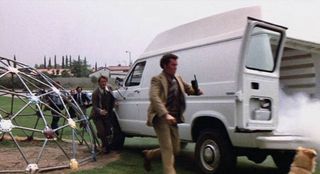
What makes it special? When asked: “Which special edition committed the biggest crimes against cinema?” The answer isn’t Star Wars . We’re happy with some of the changes Lucas made there. ET ’s special edition however is a two-hour corruption of cherished childhood memories . So much so that even Spielberg has disowned the Special Edition, stating in a 2011 interview “When people ask me which E.T. they should look at, I always tell them to look at the original 1982 E.T .”
Created to celebrate the 20th anniversary, the ET special edition suggests that Spielberg had fallen under George Lucas’ nefarious influence. After expressing concern about some of the puppet ET effects in the film, he clearly thought, “Why not use a computer to make it better/easier to develop a toy line from?” Unfortunately every single shot of E.T.’s digital double sticks out like a stumpy alien in middle America, and completely pulls you out of the film. Sure, the puppet looked a bit stiff at times, but it never fails to convince as a tangible object in that world and has charm that made E.T. so endearing in the first place.
The other notorious change was the digital removal of FBI rifles from the film, replaced by walkie-talkies. A needless change which rather than protecting younger viewers patronises them. The same goes for a dialogue alteration that sees the word “terrorist” changed to “hippy”. Still at least Spielberg realised the error of his ways stating, "I realised that what I had done was I had robbed the people who loved E.T. of their memories of E.T. And I regretted that." Listening Lucas?
.
.
Peter Jackson
The Films: The Lord Of The Rings trilogy
Years: 2002-2004
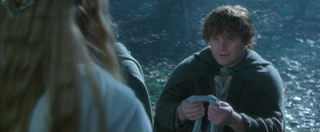
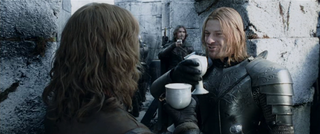
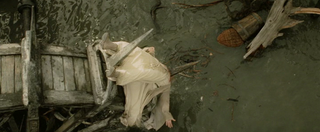
What makes them special? In general, names are not important when it comes to special editions – collector’s edition, extended edition, ultimate edition, super-mega-money-grabbing edition – even Director’s Cut, which is misused more often than not – all mean the same thing. When it comes to the Lord Of the Rings extended editions, however, the name is all-important because not only does Peter Jackson still consider the theatrical versions his director’s cut, but boy are these DVD releases extended, each film receiving between 30 and 52 additional minutes.
For the most part the additions are pure fan-pleasers and not required for a full enjoyment and understanding of the films. The additions are too numerous to list, but our favourites are Frodo and Sam seeing Wood Elves on their way to the Grey Havens, Aragorn visiting his mother’s grave and the gift-giving flashbacks (the scene which really should have been included in the theatrical cut as it explains where the gang got their fancy gear from) in Fellowship ; Merry and Pippin drinking Ent Draught and Boromir at Osgiliath in The Two Towers (more Sean Bean is always a good thing); and the appearances of Saruman and the Mouth Of Sauron in Return Of The King . Christopher Lee was very vocal about his opinion of being cut from the cinema version at the time, as he has a point; his ranty exchange with the Fellowship from the top of Orthanc is crucial to the themes of the film, and help give it more depth.
The additions make the films unbearably long for anything other than a lazy Sunday afternoon, but with just as much care and attention put into the extended scenes we haven’t watched the theatrical versions since, and wouldn’t dream of doing so.
The Film: King Kong
Year: 2006
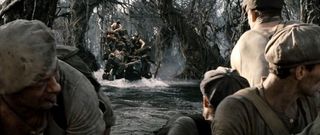
What makes it special? At almost twice the length of the original 1933 film, King Kong was already too long to start with, and this special edition adds a further 12 minutes, bringing the total runtime for the popcorn monster movie to three hours and 20 minutes – almost as long as The Godfather Part II . What makes it worse is that the new scenes don’t add a whole lot besides a few new creatures and some more Kong destruction. The most notable addition is a scene set on the river, where the explorers are attacked by a giant piranha-like fish, a triceratops attack and a climax to the canyon scene where Jimmy takes the hat of Hayes and bids him an emotional farewell.
What’s interesting is that the new and extended sequences included in the Extended Edition are almost all action oriented, whereas most of the character-centric cut scenes are left to the Deleted scenes section of the DVD – almost 40 minutes in all. Clearly Jackson didn’t think his theatrical cut was exciting enough; unfortunately these new scenes are little more than a drop in the ocean.
.
.
Doctor Who
The Story: “Day Of The Daleks”
Year: 2011
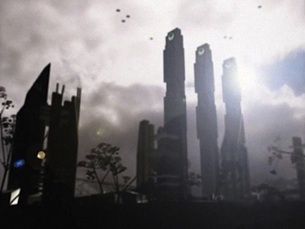
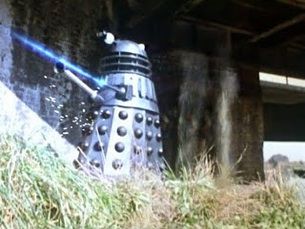
What makes it special? There have been many examples of classic Doctor Who releases with updated CG FX, They rarely work, for two main reasons: first, they tend to jar with the threadbare production values of the time and second, (unlike the new FX in the classic Trek series DVD releases) they appear to have had about £10 quid spent on the and been produced on an Amiga. What’s the point is giving us "new” FX that look dated before they’ve even been released? So CG experiments in episodes such as “The Time Warrior”, “The Ark In Space” and “Earthshock” tend to be one-time only, curiosity value affairs (though the new FX is the black and white “Dalek Invasion Of Earth” were more acceptable because there was an attempt to make them feel “more of the period”… or maybe the mere fact they were in black and white helped).
There was also a ghastly attempt to recut “Enlightenment” to give it a pace more like modern Who , an experiment which rendered the story near incomprehensible.
But the recent release of “Day of The Daleks” is something a bit special, and not because of the new CG cityscapes, which, while much better quality than most Who DVD CG effects, still look like they belong in a different show. Instead, it's the way the story has used digital doubling effects and much tighter editing to make a battle that was embarrassingly undermanned in the original look genuinely spectacular in the special edition. It goes from three Daleks and couple of Ogrons attacking a UNIT squad apparently entirely manned by their five-a-side team, to dozens of Daleks blasting away at massed troops. The Daleks also have new laser fire which helps (back in 1973, when the story was originally broadcast lasers were still a thing of the future). The idea was to create the battle that kids at the time remember today with the benefit of rose-tinted nostalgia goggles, rather than disappoint them with the cash-strapped original. You know what? They succeeded.
The Story: “The Five Doctors”
Year: 1995
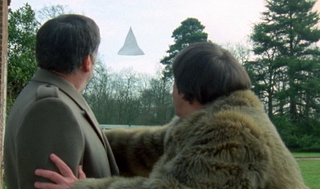

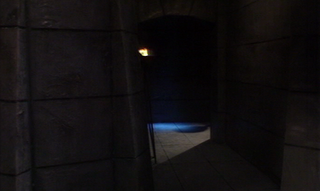
What makes it special? Doctor Who’s first genuine “special edition” (and marketed as such) was at the complete opposite end of the “special” scale and actually made the story worse. “The Five Doctors” was a multi-Doctor story broadcast to celebrate the show’s 20 anniversary in 1983. In 1995, for no apparent celebratory reason (37th anniversary, anyone?) the BBC released a new version of the story on VHS with added scenes and new FX. Sounded great. It wasn’t.
Most of the extra footage was shots of empty corridors (we kid you not) or people looking at each other for a little longer. Gone was a nifty Superman The Movie Phantom Zone-esque “Time Scoop” effect, replaced by a spinning walnut whip. The walnut whip makes an unwelcome return at the end to whisk all the Doctors back to their own time-lines, ousting a much simpler, but more appealing multi-TARDIS effect. Aside from a couple of improved laser effects, all other changes to the story are for the worse.
. .
The Other Alien movies
The Film: Alien 3
Years: 2003 and 2010
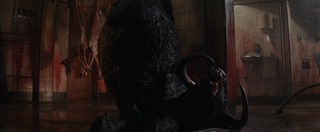
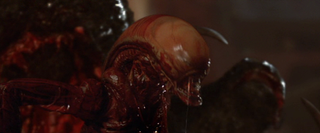
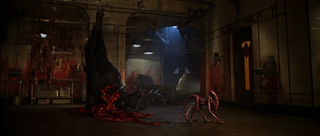
What makes it special? This is rumour control. Here are the facts. Despite what many believe, Alien 3 ’s Special Edition/Assembly Cut has nothing to do with director David Fincher. He turned his back on Alien 3 half way through filming due to prohibitive studio interference. However, the Assembly cut represents the closest to his version of the film we’re ever likely to get short of a complete reshoot, and it’s the only version you should consider watching, on Blu-ray preferably, which fixes a number of the audio issues from the DVD version.
The most significant additions are admittedly aesthetic – we no longer see the Queen erupt from Ripley’s chest during her plunge into the molten steel, the film opens with Clemens finding Ripley on the beach and the alien erupts from a cow instead of a dog (which explains why the xenomorph was so big from birth). The major change, however, is to the character of Golic – a rambling welsh weirdo in the theatrical version (played by Paul McGann) who does nothing significant in the entire movie. In the Assembly Cut, however, his role is crucial. He becomes obsessed with “the dragon” after witnessing it butcher his friends. Couple that with a shattered psyche and Golic becomes obsessed with “talking” to the dragon – going as far as killing the warden guarding the xenomorph’s temporary prison and letting it out to do so.
The assembly cut also seemingly settles a debate many fans have been having for years – is Bishop II seen at the end of the film human or android? We’re led to believe he’s human as he bleeds red blood after being hit over the head by Aaron/85, though this only makes sense if you ignore Paul WS Anderson’s Aliens Versus Predator . And everyone should ignore Aliens Versus Predator (especially the Special Edition).
The Film: Alien Resurrection
Year: 2003
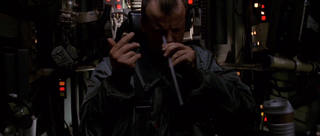

What makes it special? On the Alien Resurrection commentary, director Jean Pierre Jeunet explicitly states this is not his “director’s cut” version, however the new scenes present here do add to the darkly comedic tone of the film – a tone he is best known for. The only two significant additions are a new opening and ending. The film now starts with an extreme close up of a fly getting squashed under a man’s finger, and ends on a devastated earth with Paris in ruins in the background. It’s our preferred version, because at least you don’t have to sit through those queasy opening titles.
.
.
The Good, the Bad and the Ugly
The Good
The Film: Superman II
Year: 2006
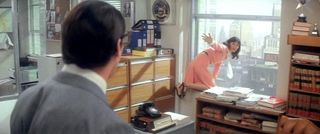
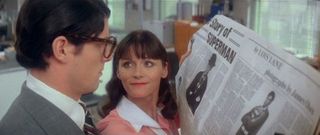
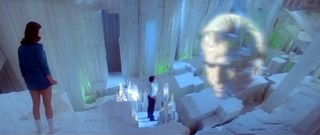
What makes it special? There were few special editions more talked about and more highly anticipated than the Richard Donner Cut of Superman II . Donner directed the original Superman , and shot a significant amount of its sequel at the same time before being unceremoniously replaced by Brit director Richard Lester after a falling out with the producers, the Salkinds.
After several campaigns to get the Donner cut released on DVD, the final barrier to its creation was overcome in the run up to the release of Superman Returns , when the estate of Marlon Brando allowed the use of footage shot for Superman II to be used for the first time. There are several crucial differences – the most significant of which are that Brando now appears in the film, creating a greater sense of continuity with the first film and giving it a gravitas missing from the theatrical cut. The opening is all-new, replacing the Eiffel Tower sequence with two smaller scenes – one set in the Daily Planet where Lois throws herself out of a window to get Superman to save her, and the other at Niagara falls where she finally learns Clark’s secret, and not in the theatrical version’s clumsy manner. We see more of the Kryptonian trio and their devastation across America on their way to the White house and there’s no fight in the Fortress Of Solitude, which means no ridiculous cellophane “S”.
Unfortunately, the Donner Cut creates a number of fatal continuity errors with the first film (which was also altered significantly before release). For example the evil trio escape because Superman throws one of Lex’s cruise missiles into space; however, if he turns back time that missile should never have been fired. It also repeats the trick of the first film – reversing time by flying round the world – replication which comes across as awkward in context. Both of these were true to Donner’s original vision of the first two movies; the original would have ended with Superman saving Lois before the Earthquake killed her.
Be warned, though – this is in no way a complete movie. It feels like a choppy work in progress, with huge chunks missing (obviously, because Donner never got the chance to shoot them). Worthwhile experiment, though.
The Film: Daredevil
Year: 2004
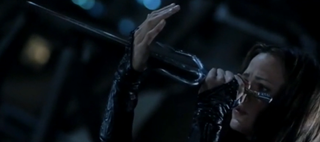
What makes it special? There are few films on this list as vastly improved by their special editions as Daredevil . In fact, we’d go as far to say that it turns it from a poor film into a very good one. You didn’t need Matt Murdoch’s heightened senses to tell that the theatrical version reeked of studio interference. It felt like a film that had been toned down for a PG-13 rating – against the dark look and tone of the action. The actual problems went much further than that. In order to make an Elektra spin-off more commercially viable extra scenes with Elektra were shoe-horned in for no artistic reason.
This Director’s Cut restores the Elektra sub-plot to its original status (ie, less of the luvvy dovey stuff), restores much of the themes of Catholic guilt integral to Daredevil’s character, reinserts an entire sub-plot exorcised from the film featuring rapper Coolio (it’s not as bad as it sounds) and makes it generally darker, grittier, much more violent (it went from a PG-13 to an R in the States) and more in tone with Frank Miller’s run on the comics with which the film was closely based. If your problem with the film is Ben Affleck, who still looks a bit awkward in red leather, then this Director’s Cut doesn’t fix that, but if you’ve dismissed the film in the past we urge you to pick this version up to see the film the way it always should have been.
The film: RoboCop
Year: 2001
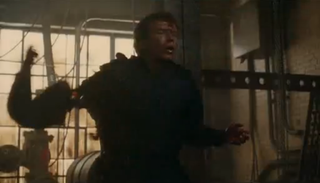
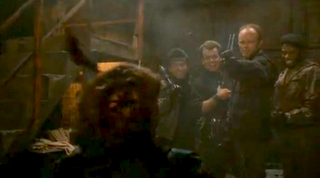
What makes it special? Sometimes Special Editions are a case of little more than reinserting scenes that were cut in order to get a specific rating from the MPAA or the BBFC (the US and UK classification boards). No film is a better example of this than RoboCop , which had several minutes of ultraviolence trimmed in order to get an R-rating.
The biggest reinstated cut comes right at the start with Murphy’s graphic murder cut by a whole minute. The effect is to reduce the impact of just how heinous a crime it is – Verhoeven making full use of Rob Bottin’s unsettling animatronic Weller to blow his arm off in-camera and show the back of his head exploding. Otherwise it’s generally a case of more blood and more gore.
The irony of the MPAA cuts is that it turns an intentionally darkly comedic film into one that just feels a bit grim – take the murder of the OCP board member by ED-209 – the uncut version goes on for so long it borders on the absurd, turning one board member’s final line “Somebody call an ambulance,” from something horrifying into something laugh-out-loud hilarious.
The Films: The Star Trek series
Year: 2001
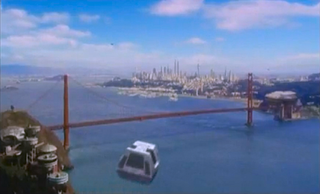
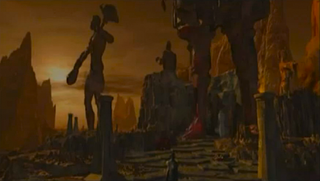
What makes them special? JJ Abrams’ Trek aside, the Star Trek movies have all received a “special edition” release of some form on DVD, but two in particular stand out from the Starfleet: 1979’s The Motion Picture and 1991’s The Undiscovered Country .
The Motion Picture ’s director’s cut was released in 2001 and adds a number of new effects shots, cleans up the audio and tightens several scenes by trimming the runtime. It’s a divisive version among fans – many preferring its less languorous pacing, whereas others lament the loss of 2001 -esque lingering shots from Robert Wise’s original, rushed, edit.
The Undiscovered Country ’s changes are much more significant, however, and dramatically change the narrative of the entire film by revealing that the Klingon assassin isn’t a Klingon at all, but a human wearing a mask. It sounds like a small difference, but in a series that often finds drama in the complex political relationships between races it’s a hugely significant moment of revelation to have omitted from the original release.
.
.
The Bad
The Film: Watchmen
Year: 2009

What makes it special? If Zach Snyder’s Watchmen proved anything, it’s that taking Alan Moore and putting him on the screen page for page, almost word for word, simply doesn’t work. Snyder’s Watchmen couldn’t have looked any better, but the structure of the story was a disaster.
The problem with the Director’s Cut is that it’s even more reverential to that source novel. It reinserts an additional 24-minutes cribbed straight from the comics, so if you liked the fact Snyder filmed the comic panel for panel, then this Director’s Cut can only be a good thing. For the rest of us it simply bloats the run time to an excessive three hours (three and a half in you’re watching the Ultimate Editions with the Black Freighter Motion comic inserted) with only one genuinely worthwhile scene – the murder of Hollis Mason by the Knot Top gang.
The Ugly
The Film: Donnie Darko
Year: 2004
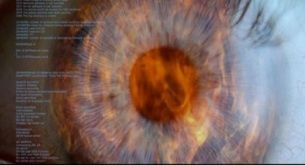
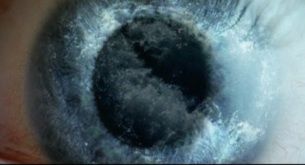
What makes it special? While many special editions are superior to their theatrical counterparts because the originals were compromised for whatever reason before being allowed out by the studios, sometimes compromise is a good thing. Take Donnie Darko . Produced on a miniscule budget, shot in barely a month and featuring only the music and effects the budget could stretch to, it went on to be a cult smash on DVD, its ambiguous plot left up for discussion and research online by those willing to invest the time.
Donnie Darko ’s Director’s Cut is best described as the “For Wendy” version (no offence to any Wendy’s reading), inserting pages from Roberta Sparrow’s Philosophy Of Time Travel book (previously available online) throughout in an attempt to make the plot more coherent. The effect is to rob viewers of the sense of discovery felt watching the film. Putting together the pieces in your head and discussing it with friends/in forums was part of what made Donnie Darko so enticing. The Director’s Cut also reinserts several deleted scenes previously unavailable on the DVD (generally cut for good reason), adds lots of random shots of eyes and makes a number of audio changes throughout – most notably changing the music as Donnie cycles down the hill at the start from Echo and the Bunnymen's “The Killing Moon” to INXS's “Never Tear Us Apart”. Avoid at all costs.
.
Read our Blogbusters discussion on the best sci-fi special editions.
More top features from SFX.co.uk

I'm the Deputy Editor at Total Film magazine, overseeing the features section of every issue where you can read exclusive, in-depth interviews and see first-look images from the biggest films. I was previously the News Editor at sci-fi, fantasy and horror movie bible SFX. You'll find my name on news, reviews, and features covering every type of movie, from the latest French arthouse release to the biggest Hollywood blockbuster. My work has also featured in Official PlayStation Magazine and Edge.
Most Popular


